New Haven & Yale University
It was in 1638 that 500 puritans led by John Davenport and Theophilus Eaton left the Massachusetts Bay Colony and set up the New Haven Colony. Growth of the colony was seriously damaged when in 1646 the first ship filled with local goods disappeared without trace en route to England. New Haven became part of the Connecticut Colony in 1664 and was joint capital of the colony with Hartford. In 1716 the Collegiate School in Saybrook decided to relocate to New Haven, and soon after it changed its name to the one by which it is still known - Yale. The city lost its the role as joint capital of Connecticut in 1873 but it continued to develop as Connecticut’s major seat of learning with several universities based in the area in addition to Yale. New Haven has a population in the region of 125,000 people.
Connecticut Hall & Statue of Nathan Hale, Old Campus, Yale University
The Old Campus is the best place to go to get a feel for historic Yale. Here amongst numerous historic buildings you will find Connecticut Hall, the oldest building not just in the University but in the whole of New Haven. Construction of the Hall commenced way back in 1750. The statue in front of the hall is of Nathan Hale, a Yale alumnus who tried to gather intelligence on the movement of British Forces during the Revolutionary War. He was captured and hanged by the British in 1776.
Broadway Civil War Monument & Christ Church
The original Civil War Monument in New Haven is the Soldiers’ and Sailors’ Monument in East Rock Park erected in 1887. In 1905 this 9.5 metre (31 foot) high monument crowned by an eagle was erected in Broadway. Behind it stands Christ Church which was founded in 1854 as an edge of town offshoot of New Haven's Trinity Church. Nowadays it is very much in the heart of the city with many Yale University buildings nearby.
Sterling Memorial Library, Yale University
Completed in 1930, the Sterling Memorial Library was designed by architect James Gamble Rogers. It was named after John William Sterling, who donated much of his fortune to Yale. The collection of books that started with the donation by Elihu Yale has now grown to over eleven million volumes spread across forty libraries. The Sterling Memorial Library, with its sixteen-level book tower, is the largest library on the Yale campus and it houses approximately 4 million volumes. The design of the building is reminiscent of the great cathedrals of Europe, although instead of religious matters its carvings, ironwork, and lead glass windows illustrate the history of books, of writing, and of Yale.
New Haven Green
The 1638 town green of the New Haven Colony still exists today, now known as New Haven Green. This 6.5 hectare (16 acre) public park was not always just an open space. For 150 years it was the main burial ground and several buildings have stood here including the State House which was demolished in 1889 following the decision to make Hartford the sole capital. Although tranquil when we visited, New Haven Green is used regularly for public events.
DLU080613
Trumbull College, Yale University
Trumbull College is named after Jonathan Trumbull, who was Governor of the Colony and later the first Governor of the State of Connecticut. The design of the college was modelled on King's College in Cambridge. Surprisingly for a building that is often considered to be a classic example of a Yale college, it dates back only to 1933. Trumbull College is one of the smaller residential colleges at Yale with about 420 students.
Pierpont House (Yale Visitor Center)
In Elm Street overlooking New Haven Green is Pierpont House, built as a dwelling house in 1767 for the grandson of one of Yale’s founders. It is now the Yale Visitor Center, the best place to start if you want to explore the university. Yale was founded in 1701 at Saybrook as the Collegiate School to educate students for ‘Publick employment both in Church & Civil State’. In 1716 it was decided to move the college to New Haven then in 1718 the Collegiate School was renamed Yale College in recognition of a donation of books and money by Welsh merchant Elihu Yale. You will learn much more about the history of Yale at the Visitor Center, including the story of the invention of the Frisbee by Yale students back in 1920.
Click on Minimap to navigate
Home > US States > New England > Connecticut >
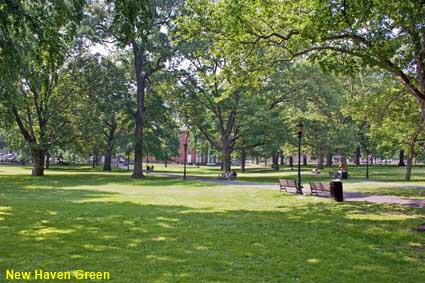
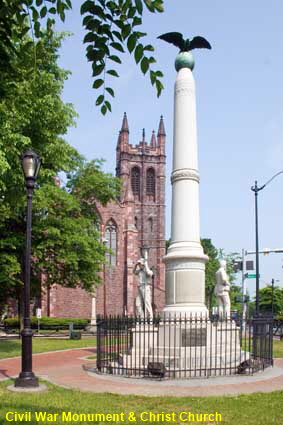
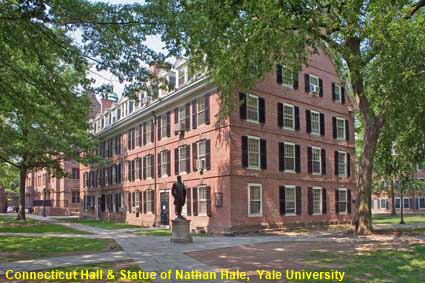
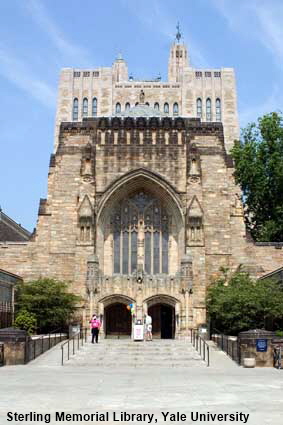
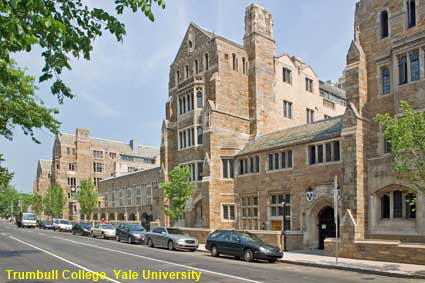
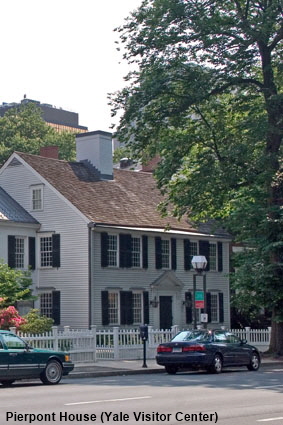


To move forwards or backwards through the Connecticut trail click the arrows above, or select your next destination on the Minimap.
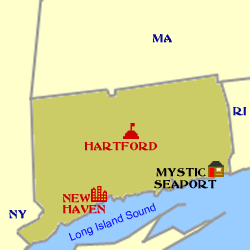

© Mike Elsden 1981 - 2025
The contents of this page may not be reproduced in full or in part without permission